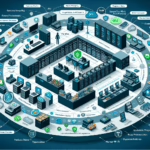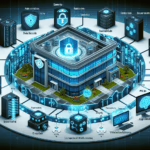Securing IT infrastructure for remote healthcare monitoring is critical due to the sensitive nature of patient data and the increasing prevalence of cyberattacks targeting healthcare organizations. As an IT manager, you need a multi-layered approach to ensure security across your datacenter, storage, servers, virtualization, operating systems, Kubernetes clusters, and AI systems. Here’s a comprehensive guide:
1. Design a Secure Architecture
- Segmentation: Use network segmentation to isolate healthcare monitoring systems from other parts of the network.
- Zero Trust Model: Implement a zero-trust security model where every user, device, and application is authenticated and authorized before accessing resources.
- Cloud & On-Prem Hybrid Security: If using a hybrid environment, ensure secure connections between on-prem datacenters and cloud platforms through encrypted VPNs or dedicated circuits.
2. Protect Patient Data
- Data Encryption: Encrypt sensitive patient data both in transit (TLS/SSL) and at rest (AES-256 or better).
- Access Control: Enforce strict access control policies using role-based access control (RBAC) and least privilege principles.
- Data Masking: Mask sensitive data when used for analytics or AI model training.
3. Secure Datacenter and Storage
- Physical Security: Ensure the datacenter is equipped with access controls (e.g., biometric entry) and environmental protections.
- Storage Hardening: Use storage solutions with built-in security features, such as encryption, immutability, and secure snapshots.
- Backup Security: Protect backups with encryption and store them offline or in immutable storage to prevent ransomware attacks.
4. Harden Servers and Virtualization Platforms
- Regular Patching: Ensure all servers, hypervisors, and virtualization platforms are regularly patched and updated.
- Secure Configurations: Use CIS benchmarks to configure servers and virtual environments securely.
- Endpoint Protection: Deploy endpoint detection and response (EDR) solutions on all servers.
5. Secure Kubernetes for Healthcare Applications
- Cluster Hardening: Use Kubernetes security best practices (e.g., securing API servers, RBAC, pod security policies, etc.).
- Secrets Management: Store sensitive data, such as API keys and patient data, in Kubernetes secrets, and ensure they are encrypted.
- Runtime Security: Use tools like Falco or Aqua Security to monitor container runtime for suspicious activity.
6. AI and Machine Learning Security
- Data Privacy in AI: Ensure AI models used for monitoring do not expose sensitive patient data during inference or training.
- Model Security: Protect AI models from adversarial attacks (e.g., poisoning or evasion attacks).
- Secure GPUs: Use secure GPU drivers and monitor GPU activity for anomalies when running AI workloads.
7. Network Security
- Firewalls: Use next-generation firewalls to inspect and control traffic between remote devices and the datacenter.
- VPNs: Require secure VPNs for all remote healthcare devices connecting to the network.
- Network Monitoring: Implement Network Intrusion Detection and Prevention Systems (IDS/IPS) for real-time monitoring.
8. Endpoint Security for Remote Devices
- Device Encryption: Ensure all remote monitoring devices (e.g., IoT devices, tablets) are encrypted and hardened.
- Secure Updates: Deploy firmware and software updates securely to remote healthcare devices.
- Remote Wipe Capability: Implement the ability to remotely wipe patient data from lost or stolen devices.
9. Identity and Access Management (IAM)
- Multi-Factor Authentication (MFA): Enforce MFA for all users accessing remote healthcare systems.
- Single Sign-On (SSO): Use SSO for convenient but secure authentication.
- Behavioral Analytics: Monitor user behavior for anomalies that may indicate compromised accounts.
10. Regulatory Compliance
- HIPAA Compliance: Follow HIPAA regulations for securing patient health data.
- GDPR Compliance: If operating in the EU, ensure compliance with GDPR rules regarding data privacy and protection.
- Audit Trails: Maintain detailed logs for all systems to meet compliance and forensic requirements.
11. Ransomware and Threat Mitigation
- Anti-Ransomware Measures: Deploy solutions to detect and block ransomware attacks, such as immutable backups and endpoint protection.
- Incident Response Plan: Develop and regularly test an incident response plan tailored to healthcare-specific threats.
- Threat Intelligence: Leverage healthcare-specific threat intelligence feeds to stay ahead of emerging risks.
12. Educate Staff and Patients
- Cybersecurity Training: Train staff on phishing, password hygiene, and handling sensitive data securely.
- Patient Awareness: Educate patients using remote monitoring devices on cybersecurity best practices, such as avoiding public Wi-Fi.
13. Regular Security Assessments
- Vulnerability Scanning: Conduct regular vulnerability scans on all infrastructure components.
- Penetration Testing: Perform penetration tests on remote healthcare systems to identify weaknesses.
- Compliance Audits: Regularly audit systems to ensure compliance with healthcare regulations.
14. Continuous Monitoring
- SIEM Integration: Use a Security Information and Event Management (SIEM) system to monitor and correlate logs across datacenter, servers, storage, and endpoints.
- AI for Threat Detection: Implement AI/ML models for anomaly detection and predictive threat analysis.
By implementing these measures, you’ll build a robust and secure IT infrastructure for remote healthcare monitoring, safeguarding patient data and ensuring continuity of care while mitigating risks from cyber threats.


